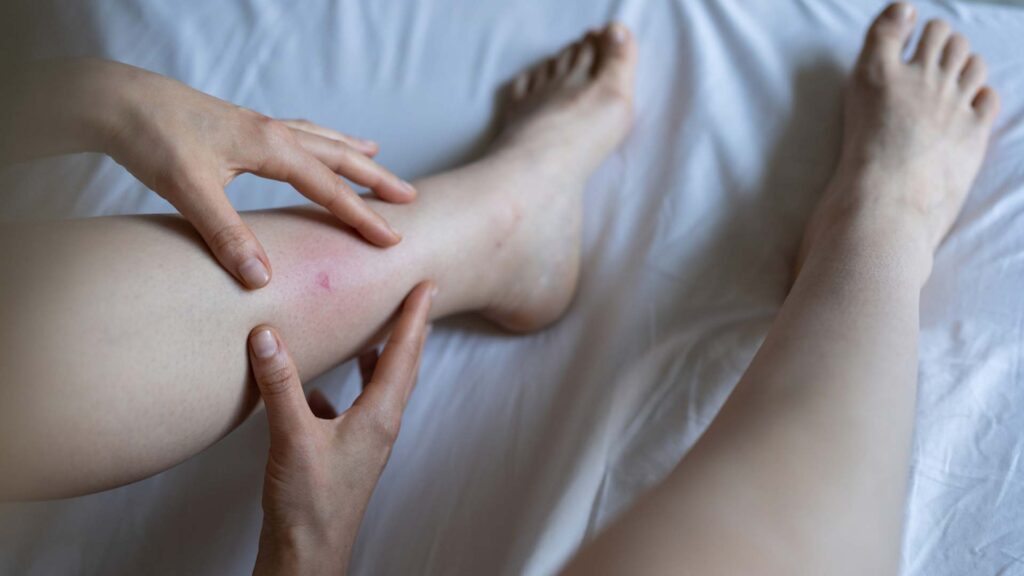How to Get Rid of Bed Bugs
Bed bugs, a common household pest, can be effectively managed with a combination of strategies. Key steps include thorough inspection, professional chemical treatments, heat treatments to kill bugs in all life stages, and the use of mattress encasements to prevent further infestation. Regular cleaning and decluttering are essential to reduce hiding spots, and preventive measures like inspecting hotel rooms and second-hand furniture are crucial. A coordinated approach, combining these methods, proves most effective in eradicating bed bugs and maintaining a pest-free home.

- Battling Bed Bugs: A Homeowner’s Guide to a Pest-Free Home
- Eradication Strategies
- Ongoing Monitoring and Follow-up Treatments
- Understanding the Enemy: A Closer Look at Bed Bugs
- The Rise of Bed Bugs in Modern Homes
- Health Implications of Bed Bug Infestations
- Preventive Measures
- Winning the War Against Bed Bugs
- Case Study: A Success Story
- FAQs
Battling Bed Bugs: A Homeowner’s Guide to a Pest-Free Home
In the stillness of night, a tiny yet formidable enemy wages a silent war in our homes. Bed bugs, once a pest of the past, have resurfaced with a vengeance in residential spaces across the globe. These nocturnal creatures, lurking in the shadows of bedrooms and living spaces, have become a significant concern for homeowners and renters alike. Their resurgence is not just a matter of discomfort but a complex challenge intertwining public health, pest control, and societal awareness.
Bed bugs, known scientifically as Cimex lectularius, are small, elusive insects with a notorious reputation. They thrive in the very places humans find most comfortable – our beds, couches, and occasionally, clothing. Their preference for human blood as a food source turns our places of rest into their feeding grounds. The stealth with which they operate, emerging under the cover of darkness to feed, makes them an insidious presence in our most intimate spaces.
This resurgence of bed bugs in modern homes has confounded experts and alarmed the public. Once thought to be a problem eradicated in the developed world, these pests have made a startling comeback in the last few decades. This revival is attributed to various factors, including increased global travel, urbanization, and the insects’ growing resistance to traditional pesticides. Cities and towns, with their dense populations and high turnover of residents, have become hotbeds for bed bug infestations.
The impact of bed bugs extends beyond the physical irritation of their bites. These pests carry a psychological burden, often causing significant stress and anxiety for those affected. The stigma associated with bed bug infestations can lead to social isolation and embarrassment, further exacerbating the situation for many individuals and families. Moreover, the economic cost of dealing with these infestations can be substantial, involving professional extermination services, replacement of furniture, and sometimes, even relocation.
Understanding bed bugs, their behavior, and effective methods of control is crucial in the fight against these persistent pests. Homeowners and renters must arm themselves with knowledge and strategies to prevent infestations and take swift, decisive action should these unwelcome guests invade their homes. The battle against bed bugs is not just about eliminating a nuisance; it’s about reclaiming our personal spaces and ensuring the health and well-being of our families and communities.
Quick Tips for Identifying Bed Bugs
Eradication Strategies
Eradicating bed bugs is a complex challenge that requires a strategic and comprehensive approach. Homeowners and pest control professionals alike must employ a variety of tactics to effectively combat these resilient pests.
Detailed Inspection
The first step in any bed bug eradication effort is a thorough inspection. This involves examining all potential hiding places, including mattresses, box springs, bed frames, furniture, behind wallpapers, and even in electrical outlets. Bed bugs are adept at hiding in the smallest of crevices, making meticulous inspection crucial. Professionals often use tools like magnifying glasses and flashlights, and in some cases, trained dogs are used for their ability to detect bed bugs through scent.
Chemical Treatments
Chemical treatments remain a common method for bed bug control. This includes the use of insecticides specifically designed to target bed bugs. However, due to the pests’ growing resistance to certain chemicals, this method should not be the sole strategy. It’s important to use EPA-approved insecticides and to rotate products to prevent resistance build-up. Safety is paramount; hence, adherence to the manufacturer’s instructions is essential.
Heat Treatment
Heat treatment is an increasingly popular and effective method for eradicating bed bugs. This process involves raising the temperature in the infested area to a level that is lethal to bed bugs. Professional exterminators use specialized equipment to heat rooms to at least 120°F, a temperature that can kill bed bugs in all life stages within minutes. This method is particularly effective as it penetrates into crevices and upholstery, where bed bugs often hide.
Cryonite Freezing
Cryonite freezing is a non-toxic method that involves blasting bed bugs with carbon dioxide snow, which freezes and kills them instantly. This method is ideal for sensitive areas where chemical treatments are not advisable. It’s effective against bed bugs in all life stages and leaves no residue, making it safe for use in homes with children and pets.
Mattress Encasements
Using mattress and box spring encasements can trap bed bugs and prevent further infestation. These encasements are designed to be bed bug-proof and can effectively contain and starve any bed bugs trapped inside. They also simplify the process of inspection, as they eliminate the bed bugs’ favorite hiding spots.
Regular Cleaning and Decluttering
Maintaining a clean and clutter-free environment is key in preventing bed bug infestations. Regular vacuuming can help remove bed bugs and their eggs from carpets, floors, and furniture. Reducing clutter eliminates potential hiding spots, making it harder for bed bugs to establish themselves.
Integrated Pest Management (IPM)
IPM is a holistic approach that combines various eradication methods with ongoing monitoring and prevention strategies. This approach involves not just the application of pesticides or heat treatments, but also incorporates education, regular inspections, and improvements in sanitation and habitat modification to prevent re-infestation.
Ongoing Monitoring and Follow-up Treatments
After initial treatment, ongoing monitoring is essential to ensure the complete eradication of bed bugs. This may include regular inspections and possible follow-up treatments. Bed bug traps and monitors can be used to detect the presence of bed bugs early, preventing a full-blown infestation.
Eradicating bed bugs requires a multi-pronged approach that combines thorough inspection, various treatment methods, and preventive measures. Homeowners should be prepared for the possibility of multiple treatments and ongoing vigilance to ensure a bed bug-free environment.
In severe cases, professional pest control services are recommended to effectively manage and eliminate bed bug infestations.
Incorporating price ranges for various bed bug remediation services is crucial for homeowners to understand the potential costs involved. It’s important to note that prices can vary widely depending on the severity of the infestation, the size of the infested area, the method of treatment, and geographic location. Here are approximate price ranges for common bed bug remediation services:

1. Professional Inspection
- Basic Inspection: Free to $100. Some companies offer free initial inspections, while others may charge for more comprehensive evaluations.
- Canine Inspection: $300 to $600. Inspections involving trained dogs that detect bed bugs can be more expensive but are often more thorough.
-
Best OverallSave $50 on your first recurring service today with code GET50
-
Best for TermitesSave $50 on pest control services with code SAVE50 at checkout
-
Best for Bed BugsGet a free estimate on pest control services for your home
-
Best for Wildlife RemovalCall For A Fast & FREE Phone Estimate Today
-
Best for Natural TreatmentGet $100 Off Your Termite Treatment Service
2. Chemical Treatments
- Room Treatments: $250 to $900 per room. The cost depends on the size of the room and the severity of the infestation.
- Whole-House Treatment: $1,500 to $5,000. Treating an entire house is more expensive but may be necessary for severe or widespread infestations.
3. Heat Treatment
- Single Room Treatment: $300 to $1,500 per room. This method is often more expensive than chemical treatments but can be more effective.
- Whole-House Heat Treatment: $2,000 to $8,000. The high cost reflects the equipment and energy required to heat the entire house to the lethal temperature for bed bugs.
4. Cryonite Freezing
- Per Treatment: $500 to $1,500. The cost varies based on the size of the area treated and the level of infestation.
5. Mattress and Box Spring Encasements
- Per Encasement: $50 to $200. The price depends on the size and quality of the encasement.
6. Integrated Pest Management (IPM)
- Initial Treatment and Follow-Up: $1,000 to $5,000. IPM combines various methods and includes ongoing monitoring and follow-up treatments.
7. Ongoing Monitoring and Maintenance
- Regular Inspections: $50 to $200 per visit. Periodic inspections are crucial for ensuring the infestation is completely eradicated.
DIY Bed Bug Control
Regular Vacuuming
Helps remove bed bugs and their eggs from mattresses, carpets, and crevices.
Wash and Heat-Dry Beddings and Clothes
High temperatures (above 120°F) can kill bed bugs.
Seal Cracks and Crevices
Prevent bed bugs from entering or escaping from hiding spots.
Non-Chemical Traps
Use interceptors under bed legs to catch and monitor bed bug activity.
It’s essential for homeowners to get multiple quotes from licensed pest control professionals and to understand what each service entails. Some companies may offer package deals or warranties, which can provide additional value. Remember, the cheapest option may not always be the most effective, and investing in quality service can save money and hassle in the long run.
Comprehensive Bed Bug Eradication Strategies
| Stretegy | Description | Pros | Cons | Best Used When |
|---|---|---|---|---|
| Detailed Inspection | Meticulous examination of all potential hiding spots. May involve professional tools or trained dogs. | Essential first step for identifying infestation extent. | Time-consuming; requires attention to detail. | Initial assessment and post-treatment monitoring. |
| Chemical Treatments | Use of EPA-approved insecticides targeting bed bugs. | Effective for widespread infestations. | Potential resistance; safety concerns. | Moderate to severe infestations; combined with other methods. |
| Heat Treatment | Raising room temperature to at least 120°F to kill bed bugs. | Kills all life stages; penetrates hidden areas. | Requires professional equipment; not suitable for all items. | Large-scale infestations; comprehensive room treatment. |
| Cryonite Freezing | Blasting bed bugs with carbon dioxide snow to freeze them. | Non-toxic; leaves no residue. | Requires specialized equipment. | Sensitive areas; as a supplement to other methods. |
| Mattress Encasements | Using bed bug-proof covers for mattresses and box springs. | Traps and starves bed bugs; simplifies inspection. | Does not eliminate bed bugs outside the encasement. | Prevention; post-treatment containment. |
| Regular Cleaning and Decluttering | Vacuuming and reducing clutter to minimize hiding spots. | Preventative measure; reduces re-infestation risk. | Requires consistent effort. | Ongoing maintenance; alongside other treatments. |
| Integrated Pest Management (IPM) | Combining various methods with ongoing monitoring and prevention. | Holistic approach; reduces pesticide reliance. | Requires coordination and persistence. | Comprehensive management; in multi-unit buildings. |
| Ongoing Monitoring and Follow-up Treatments | Regular inspections and additional treatments as needed. | Ensures complete eradication. | Time and resource-intensive. | After initial treatment; to prevent re-infestation. |
Understanding the Enemy: A Closer Look at Bed Bugs
Bed bugs, small insects belonging to the family Cimicidae, are notorious for their blood-feeding habits on humans. Adult bed bugs are oval, wingless, and approximately the size of an apple seed, with a reddish-brown color that becomes more pronounced after feeding. These nocturnal pests are adept at hiding, making their detection challenging. They prefer to dwell in close proximity to their human hosts, typically within mattresses, bed frames, and other furniture, emerging predominantly at night to feed.
The life cycle of a bed bug is composed of several stages, starting from a tiny, translucent egg to the full-grown adult. This development process, influenced by temperature and availability of food, can take anywhere from a few weeks to several months. Nymphs, or juvenile bed bugs, require a blood meal to molt and progress to the next stage of their life cycle. This dependency on blood makes human dwellings an ideal habitat for these pests. Intriguingly, bed bugs can survive for months without feeding, a trait that contributes to their resilience in unoccupied spaces.
Understanding bed bug behavior is key to controlling them. They are attracted to the warmth and carbon dioxide emitted by humans, guiding them to their feeding sites. Their bites, often in a line or cluster, can lead to itching and discomfort but are generally not dangerous. However, the psychological impact of an infestation can be profound, causing distress and sleep disturbances. Recognizing the signs of bed bugs, such as small blood spots on bedding, shed skins, or the bugs themselves, is crucial for early detection and effective control.
The Rise of Bed Bugs in Modern Homes
The resurgence of bed bugs in modern homes is a phenomenon that has perplexed and concerned scientists and homeowners alike. This uptick, particularly noticeable since the early 2000s, can be attributed to several factors. Globalization plays a significant role; increased international travel and the movement of goods across borders have facilitated the spread of these pests. Bed bugs are adept hitchhikers, easily latching onto luggage, clothing, and furniture, thus finding their way into new environments where they were previously eradicated or uncommon.
Another critical factor in the rise of bed bugs is their growing resistance to pesticides. Over the decades, bed bugs have been exposed to various chemical treatments, leading to the development of resistance in these populations. This resistance is compounded by the ban or reduced usage of potent pesticides like DDT, which were effective but posed significant environmental and health risks. Modern urban environments also contribute to the proliferation of bed bugs. High-density living conditions, such as apartment complexes and dormitories, provide ideal breeding grounds for these pests. The close proximity of living units facilitates the rapid spread of bed bugs from one space to another.
Furthermore, a lack of public awareness and the stigma associated with bed bug infestations often lead to delayed reporting and treatment, allowing infestations to grow unchecked. The misconception that bed bugs are only found in unclean environments has been debunked; they are opportunistic pests that can thrive in any environment as long as they have access to their food source – human blood. As our urban landscapes continue to evolve and global travel becomes more accessible, the challenge of managing bed bug infestations becomes increasingly complex, requiring more innovative and integrated approaches to pest control.
Health Implications of Bed Bug Infestations
The health implications of bed bug infestations extend beyond the physical discomfort of their bites. These nocturnal pests can cause a range of allergic reactions in humans. The severity of these reactions varies widely among individuals. While some may experience minor redness and itching, others might suffer from intense swelling and pronounced rashes. In rare cases, individuals with severe allergies can experience anaphylactic reactions, necessitating immediate medical attention. It’s important to note that the psychological impact of bed bug bites can be just as significant as the physical symptoms. The knowledge of being bitten during sleep can lead to anxiety and sleep disturbances. Chronic infestations have been linked to increased stress levels, insomnia, and in some cases, even depression. The social stigma associated with bed bugs can further exacerbate these psychological effects, leading to social withdrawal and a sense of isolation.
Moreover, the presence of bed bugs in a living space can indirectly affect overall health. The stress and anxiety associated with managing an infestation can impact immune system function, potentially making individuals more susceptible to other illnesses. Additionally, the use of chemical treatments to eradicate bed bugs raises concerns about prolonged exposure to insecticides within the home. While professional exterminators strive to use safe and effective methods, there is still a risk of exposure to chemical residues, which can be particularly concerning for households with children, the elderly, or those with pre-existing health conditions. As such, understanding and mitigating the health implications of bed bugs is crucial, not only in terms of direct physical effects but also considering the broader impact on mental health and well-being.
Myths vs Facts
Myth: Bed bugs transmit diseases.
Fact: There’s no evidence that bed bugs transmit diseases to humans.
Myth: Bed bugs are only found in dirty places.
Fact: Bed bugs are not attracted to dirt; they are attracted to warmth, blood, and carbon dioxide.
Myth: Bed bugs can’t be seen with the naked eye.
Fact: Adult bed bugs are visible and about the size of an apple seed.
Preventive Measures
Preventive measures against bed bugs are crucial, especially in urban environments where these pests are most prevalent. Awareness is the first line of defense. Homeowners should educate themselves about the appearance of bed bugs and their signs, such as small, rust-colored stains on bedding, tiny eggshells, or shed skins in areas where bed bugs hide. Regular inspections of bedrooms and living areas, particularly after guests have stayed or second-hand furniture has been introduced, are essential. This vigilance extends to travelers who should examine hotel beds, headboards, and furniture for signs of bed bugs, keeping luggage off the floor and using metal luggage racks when available.
Travel Tips to Avoid Bed Bugs

In addition to inspections, maintaining a clean and clutter-free home environment is vital. Clutter offers numerous hiding places for bed bugs, making detection and eradication more challenging. Regular vacuuming can help remove any early invaders, particularly along baseboards, carpets, and furniture. Bedding and curtains should be washed frequently at high temperatures to kill any bed bugs or eggs. For those living in multi-unit buildings, sealing cracks and crevices and installing door sweeps can prevent bed bugs from migrating from other units. Homeowners can also use protective covers on mattresses and box springs, which not only trap bed bugs but also restrict their ability to hide and breed.
Finally, awareness of the sources of bed bugs can significantly reduce the risk of infestation. Caution should be exercised when acquiring second-hand furniture, a common vector for bed bugs. Such items should be thoroughly inspected and, if possible, treated before being brought into the home. Engaging with community education programs about bed bugs and sharing strategies with neighbors can also be beneficial, as bed bug control is most effective when entire communities are informed and proactive. By combining vigilance, cleanliness, and community engagement, homeowners can significantly reduce their risk of a bed bug infestation.
Winning the War Against Bed Bugs
The resurgence of bed bugs in modern homes is more than a mere nuisance; it’s a call to action for homeowners and communities alike. These persistent pests, known for their stealthy behavior and resilience against traditional eradication methods, require a strategic and informed approach to be effectively managed.
Understanding that bed bugs are not just a personal problem but a community issue is crucial. They do not discriminate between clean and cluttered homes, nor do they respect the boundaries of apartments or houses. This universality of the bed bug challenge necessitates a collective response, one that involves homeowners, tenants, and local authorities in a coordinated effort.
Education plays a pivotal role in this battle. Awareness about bed bug biology, their behavior, and signs of infestation can empower individuals to detect problems early and respond promptly. Simple measures, such as regular inspections of bedding, furniture, and luggage, can go a long way in early detection. Public health campaigns and community workshops can disseminate this knowledge, transforming each member of the community into a vigilant sentinel against these pests.
Professional intervention is often necessary, especially in severe cases. Pest control experts equipped with the latest tools and techniques can offer solutions that are not just effective but also safe and sustainable. These professionals can tailor their approach to each unique situation, ensuring that the battle against bed bugs is fought on all fronts – from chemical treatments and heat applications to preventive strategies and ongoing monitoring.
When to Call a Professional
- Persistent Infestation: If DIY methods fail and bed bugs persist.
- Large Scale Infestation: In cases of severe infestation, professional treatment is more effective.
- Health Concerns: If you’re allergic to bed bug bites or concerned about pesticide use.
- Preventive Measures: Professionals can offer solutions to prevent future infestations.
Moreover, the fight against bed bugs is also a fight for mental well-being. The psychological impact of an infestation – anxiety, sleeplessness, and a sense of violation – cannot be overstated. Providing support to those affected, whether through counseling services or community support groups, is essential. This human-centric approach acknowledges that the impact of bed bugs transcends the physical realm, touching the very peace and comfort of our homes.
Innovation and research are key allies in this ongoing battle. As bed bugs evolve, so must our strategies to combat them. Investment in research to develop new, more effective, and environmentally friendly eradication methods is imperative. Collaboration between scientists, pest control professionals, and policymakers can pave the way for novel solutions that protect our homes and health.
Finally, prevention remains the most effective strategy. Simple habits, such as inspecting second-hand furniture and maintaining a clutter-free environment, can significantly reduce the risk of infestation. For travelers, vigilance in hotels and the use of protective luggage covers can prevent the unwitting transport of these pests into the home.
The war against bed bugs is multifaceted and ongoing. It demands vigilance, education, professional expertise, and community cooperation. By staying informed, proactive, and resilient, homeowners can not only address current infestations but also safeguard their homes against future invasions. In this concerted effort, victory against bed bugs is not just a possibility; it is an achievable reality.
Case Study: A Success Story
In the heart of New York City, a large apartment complex became a battleground against bed bugs. The infestation had reached a critical point, affecting multiple units and causing distress among residents. The management, recognizing the severity of the situation, enlisted the expertise of a renowned pest control company specializing in bed bug eradication.
The pest control team initiated their strategy with an exhaustive inspection of the affected and adjacent units, employing bed bug-sniffing dogs for accurate detection. This was followed by an educational campaign for the residents, informing them about bed bug identification, prevention, and the importance of early reporting. The eradication process involved a combination of high-heat treatments and targeted chemical applications in the most affected areas. Furniture and personal belongings were treated in portable heat chambers, ensuring the elimination of bed bugs at all life stages. In less critical areas, a non-toxic, freeze-based treatment was used, minimizing the impact on the residents’ daily lives.
The success of this approach was evident within a few months. Regular follow-up inspections showed a significant decrease in bed bug activity, and resident complaints dropped drastically. This case not only highlights the effectiveness of an integrated pest management approach but also underscores the importance of community involvement and education in tackling such pervasive infestations. The collaborative effort between the pest control professionals and the residents was key in turning a bed bug crisis into a success story, restoring peace and comfort to the inhabitants of the complex.
FAQs
What are the first signs of a bed bug infestation?
The first signs include small, itchy bites on your skin, often in a line or cluster. You might also notice tiny blood spots on your sheets, small dark or rusty spots of bed bug excrement, and in severe cases, a musty odor.
Can I get rid of bed bugs on my own?
While minor infestations can sometimes be controlled with DIY methods, such as thorough vacuuming and washing all bedding at high temperatures, professional treatment is often necessary. Bed bugs are notoriously hard to eliminate, and over-the-counter insecticides may not be effective.
Are bed bugs dangerous?
Bed bugs are not known to transmit diseases, but their bites can cause allergic reactions in some people. The psychological effects, such as stress and sleep disturbances, can also impact your well-being.
How do bed bugs spread from one place to another?
Bed bugs can hitch a ride on luggage, clothing, used furniture, and other personal belongings. They do not fly or jump, but they can move quickly over floors, walls, and ceilings.
What should I do if I suspect a bed bug infestation in my home?
Start by thoroughly inspecting your sleeping areas. Look for signs of bed bugs in the seams of mattresses, bed frames, and nearby furniture. If you find evidence of bed bugs, consider contacting a pest control professional for an assessment and treatment plan.
How effective are home remedies like essential oils or baking soda in treating bed bugs?
While some home remedies are touted online, their effectiveness is generally limited and not scientifically proven. Bed bugs are resilient, and home remedies often fail to reach them in their hiding spots.
Can bed bugs live in electronic devices or appliances?
Yes, bed bugs can hide in small spaces, including inside electronic devices and appliances, especially if these items are near your sleeping area. However, this is less common than finding them in beds, furniture, or textiles.
How long does it take to completely get rid of a bed bug infestation?
The time it takes to fully eradicate bed bugs depends on the extent of the infestation and the treatment methods used. It can take several weeks to months, especially if chemical treatments are involved, as these may require multiple applications.
Are bed bugs more active at a certain time of year?
Bed bugs are indoor pests and can be active all year round. However, infestations may be noticed more during summer, possibly due to increased travel and movement of infested items.
How can I prevent bed bugs from entering my home?
Preventive measures include inspecting second-hand furniture before bringing it into your home, using protective covers on mattresses and pillows, reducing clutter, and being vigilant while traveling, especially when staying in hotels.









